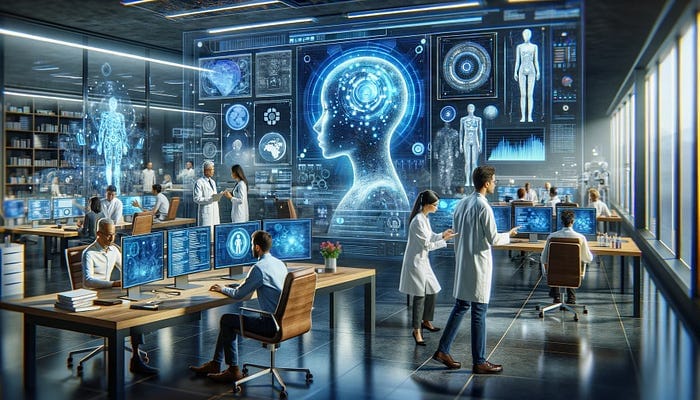Safety Measures in AI Development

Artificial Intelligence (AI) has rapidly advanced, holding enormous potential for transformative benefits across various sectors. However, with this potential comes significant risks, necessitating robust safety measures. This short essay explores the vital safety measures essential in AI development, aiming to mitigate risks and ensure that AI systems operate safely, ethically, and in alignment with human values, fostering a sense of optimism and engagement in the audience.
Transparency in AI development is not just a feature, but a necessity for building trust and fostering accountability. AI systems must be designed to be understandable and their decision-making processes explainable. This involves creating models that can provide clear rationales for their actions, empowering developers and users to identify and correct errors. Transparent AI systems facilitate better oversight and regulatory compliance, ensuring they function as intended without causing unintended harm. This process of accountability makes the audience feel integral and responsible in the development of AI.
AI systems are susceptible to biases in the data they are trained on. These biases can lead to discriminatory outcomes, perpetuating or amplifying societal inequities. Developers should implement vigorous methods to detect and address biases during training to mitigate bias. This includes using diverse and representative datasets, applying fairness constraints, and monitoring AI outputs for bias. Ensuring AI systems are fair and unbiased is critical for maintaining ethical standards and public trust.
Thorough testing of AI systems in diverse and real-world scenarios is essential for identifying potential failures and vulnerabilities. Robust testing involves subjecting AI models to various inputs and conditions to evaluate their performance and resilience. By thoroughly testing AI systems, developers can identify and rectify issues before deployment, reducing the risk of failures that could lead to catastrophic consequences.
Integrating human oversight into AI decision-making processes is a safety measure and a crucial step toward maintaining control and ethical responsibility. Human-in-the-loop mechanisms allow for continuous monitoring and the ability to intervene when necessary. This ensures that critical decisions, especially those with significant ethical or safety implications, are subject to human judgment. Human oversight safeguards against unintended actions by AI systems and helps maintain accountability in the moral development of AI.
Ensuring the security of AI systems is vital to protect them from cyber-attacks and unauthorized access. Strong security measures include implementing encryption, access controls, and continuous monitoring for vulnerabilities. Securing AI systems prevents malicious actors from exploiting them, potentially leading to harmful outcomes. Protecting AI systems from external threats is essential for maintaining their integrity and reliability.
Following ethical guidelines and principles is essential to responsible AI development. Ethical guidelines provide a framework for developers to consider the broader impact of their AI systems on society. This includes respecting user privacy, ensuring transparency, and prioritizing the well-being of individuals and communities. Adhering to ethical standards helps ensure that AI systems are developed and deployed in a manner that aligns with societal values and promotes the public good.
As AI continues to evolve, implementing robust safety measures is critical to mitigating risks and ensuring AI systems operate safely and ethically. Transparency, bias mitigation, intense testing, human oversight, security, and adherence to ethical guidelines are essential components of a comprehensive AI safety strategy. By prioritizing these measures, developers and policymakers can harness AI’s benefits while safeguarding against potential harms, ensuring that AI serves as a positive force in society.
Join Us Towards a Greater Understanding of AI
We hope you found insights and value in this post. If so, we invite you to become a more integral part of our community. By following us and sharing our content, you help spread awareness and foster a more informed and thoughtful conversation about the future of AI. Your voice matters, and we’re eager to hear your thoughts, questions, and suggestions on topics you’re curious about or wish to delve deeper into. Together, we can demystify AI, making it accessible and engaging for everyone. Let’s continue this journey towards a better understanding of AI. Please share your thoughts with us via email: marty@bearnetai.com, and don’t forget to follow and share BearNetAI with others who might also benefit from it. Your support makes all the difference.
Thank you for being a part of this fascinating journey.
BearNetAI. From Bytes to Insights. AI Simplified.
Categories: Ethics and Society, Artificial Intelligence, Regulation and Policy, Cybersecurity, Data Science and Machine Learning
The following sources are cited as references used in research for this BLOG post:
Superintelligence: Paths, Dangers, Strategies by Nick Bostrom
Weapons of Math Destruction: How Big Data Increases Inequality and Threatens Democracy by Cathy O’Neil
Human Compatible: Artificial Intelligence and the Problem of Control by Stuart Russell
Artificial Intelligence: A Guide for Thinking Humans by Melanie Mitchell
Life 3.0: Being Human in the Age of Artificial Intelligence by Max Tegmark
© 2024 BearNetAI LLC